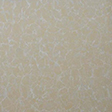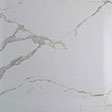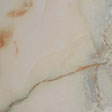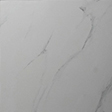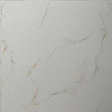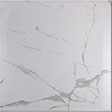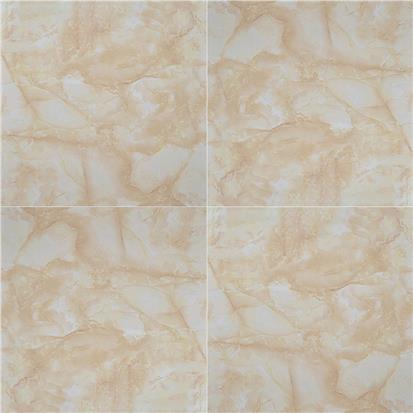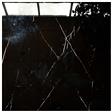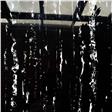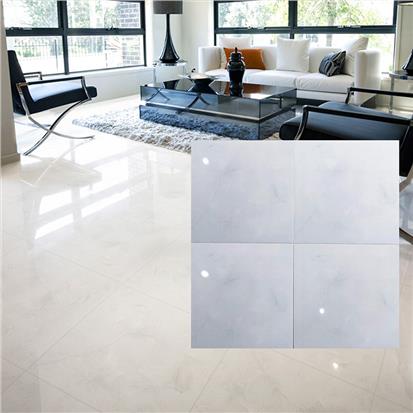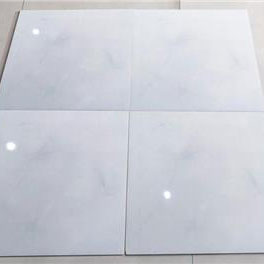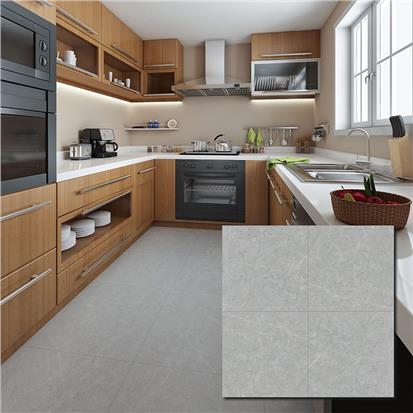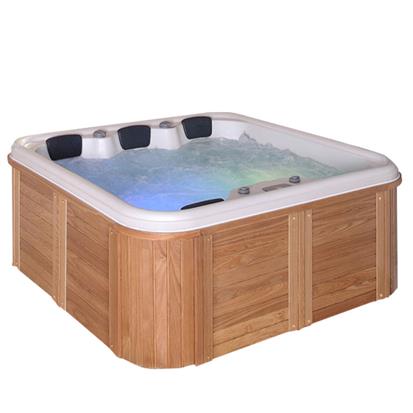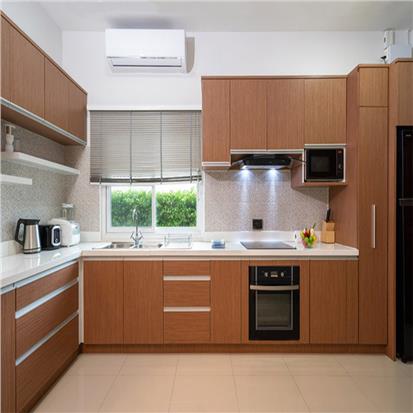The surface of polished tiles and glazed tiles is a kind of relatively bright tiles. They are indeed similar in appearance. It is difficult to distinguish them without careful identification. What is the difference between polished tiles and glazed tiles? Today we take you to see the difference between polished tile and glazed tile from the aspects of specification, color, tile blank, wear resistance, stain resistance, and price.
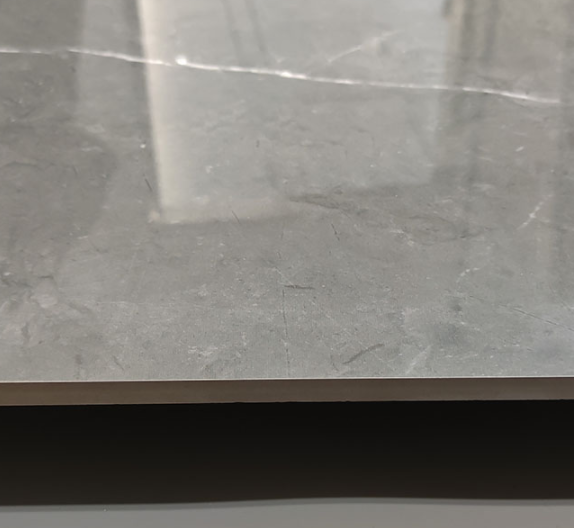
What is Polished Tile?
Polished tile is a kind of bright tile formed by grinding the surface of the whole tile body, which belongs to the whole tile. Compared with the whole tile, the surface of the polished tile is much smoother. Polished tiles are hard and wear-resistant, suitable for use in most indoor spaces except toilets and kitchens, such as balconies, exterior wall decoration, etc. On the basis of using the technology of infiltrating flowers, polished tiles can make various stone-like and wood-like effects.
What is Glazed Tile?
Glazed tile is a new process of ceramic tile that can be polished on the glaze. Glazed tile integrates the advantages of polished tile and antique tile. The glaze is as smooth and clean as polished tile. At the same time, its glaze color is as rich as antique tile. The color is thick or gorgeous. However, because the manufacturing process is complex, the price is relatively high.
Difference between Polished Tiles and Glazed Tiles
1. Specifications
Polished tiles and glazed tiles also differ in size. Polished tiles are mainly used in the living room lamps. The size is generally 600 or 800 large floor tiles, while glazed tiles are often 300*300 small floor tiles.
2. Color
The color of polished tiles is relatively single without much change, and the difference between the colors of the tile surface will not be too strong, but the glazed tiles are different. The glazed tiles are more colorful than polished tiles. The glazed tiles are drenched with glaze after printing patterns. The colors should be bright and unrestricted. There is no problem with red, black, yellow, blue, cyan, and purple.
3. Texture
The texture of the polished tile is different from that of glazed tile. The texture of polished tile cannot be very small. Glazed tile can have fine lines like needles and thread.
4. Tile blank
tile blank is the key to distinguishing between polished tile and glazed tile. Polished tile infiltrates the color into the tile body, so the color of the tile body 1-2mm below the surface is the same as that of the surface. The glazed tiles are completely different. They will not penetrate into the tile body at all. Looking at the side of the tile, the glazed tiles are obviously layered. It is obvious that the glaze can be seen. If the tile surface has only one very thin color layer, it must be glazed tiles.
5. Abrasion resistance
Polished tile is a layer of glaze added to the surface of the polished tile. In contrast, it has good brightness and good permeability, but its wear resistance is not as good as polished tile. The surface of the polished tile is very thick crystal, which is more wear-resistant, while the surface of the polished tile is layer glaze, which is very thin, and the wear resistance is not so strong.
6. Antifouling property
Polished tiles are suitable for use in most indoor spaces except toilets and kitchens. However, the concave and convex pores left by polished tiles during production will hide dirt, causing the surface to easily infiltrate pollutants. Even some tea poured on polished tiles is powerless. However, the anti-pollution effect of polished tiles is far better than that of polished tiles.
7. Price
The glazed tile has a high degree of simulation. It combines the advantages of antique tiles and polished tiles. The tile surface is polished on the basis of glazed tiles. The process is more complex than polished tiles. The appearance has both rich colors of glazed tiles and bright and clean polished tiles. Therefore, the price is more expensive than polished tiles.
 EN
EN FR
FR PT
PT AR
AR


